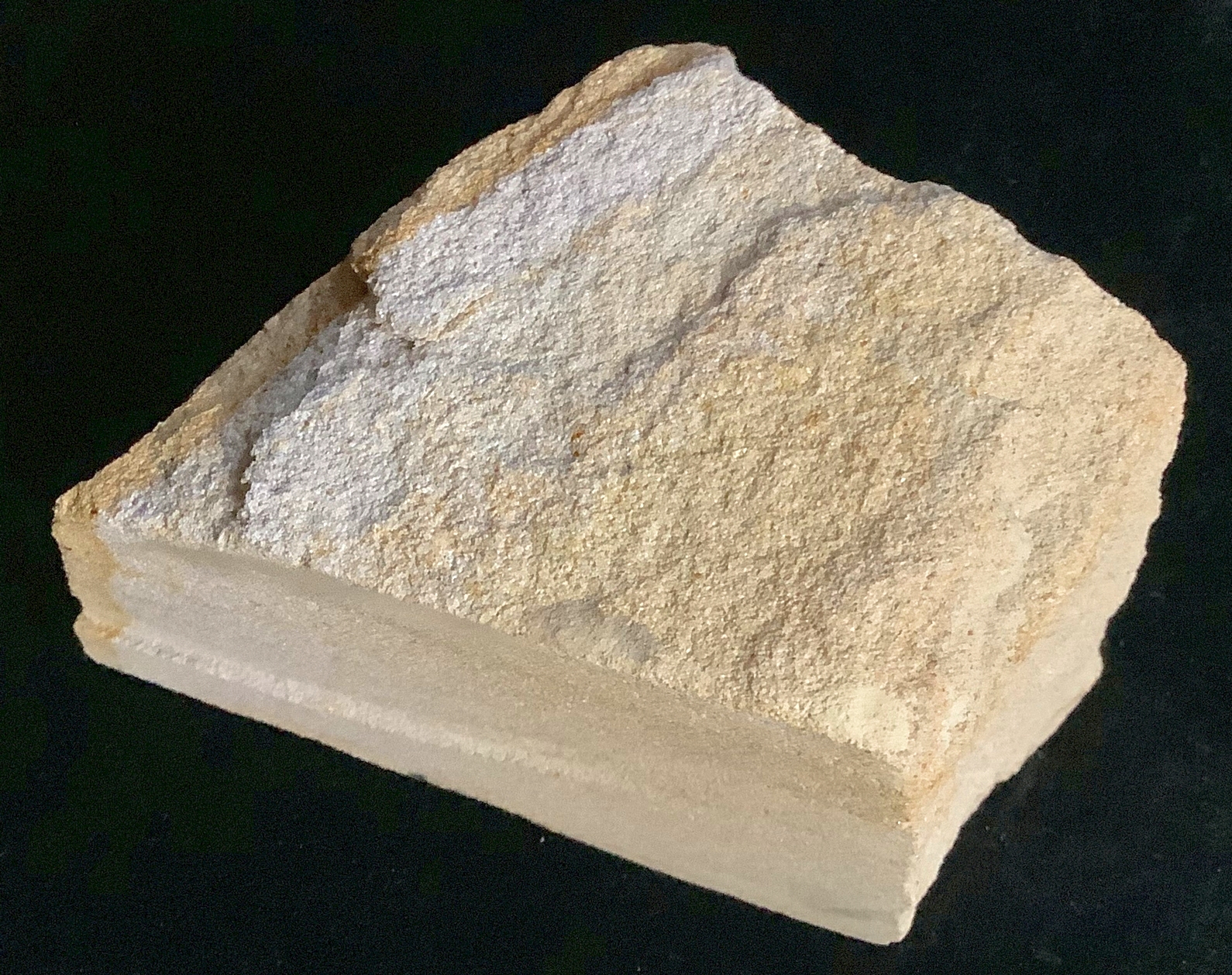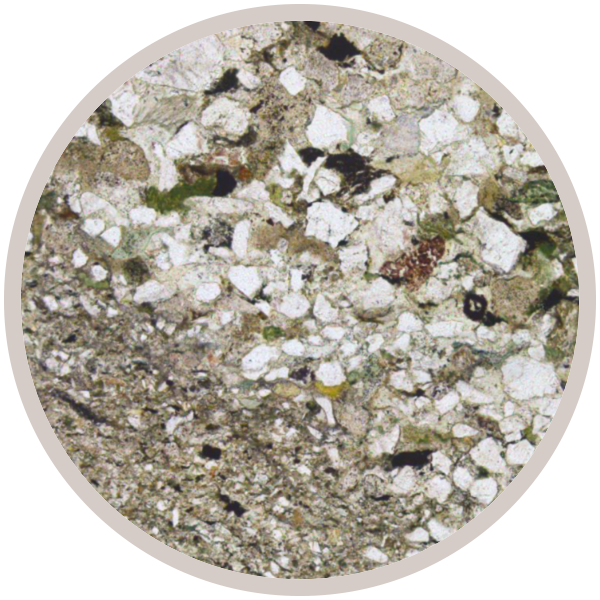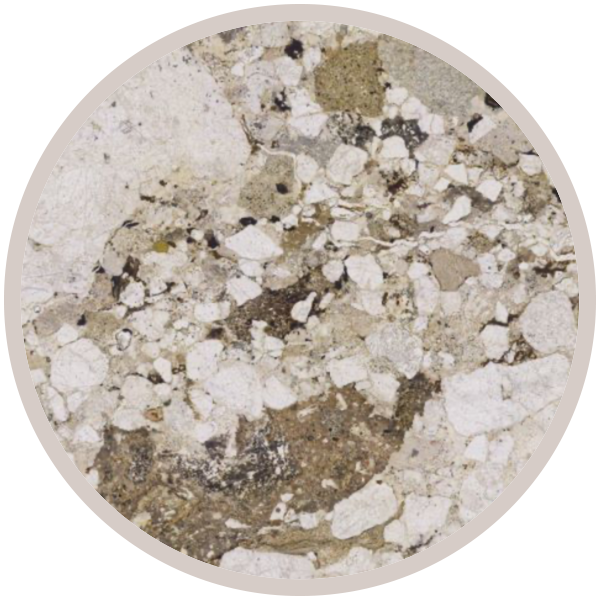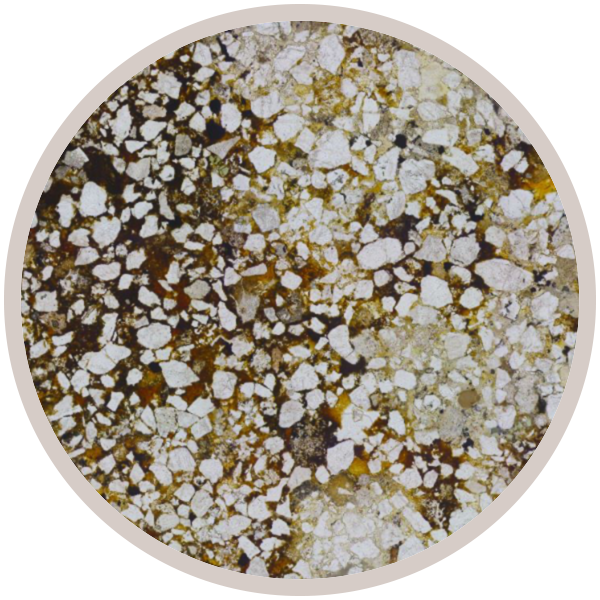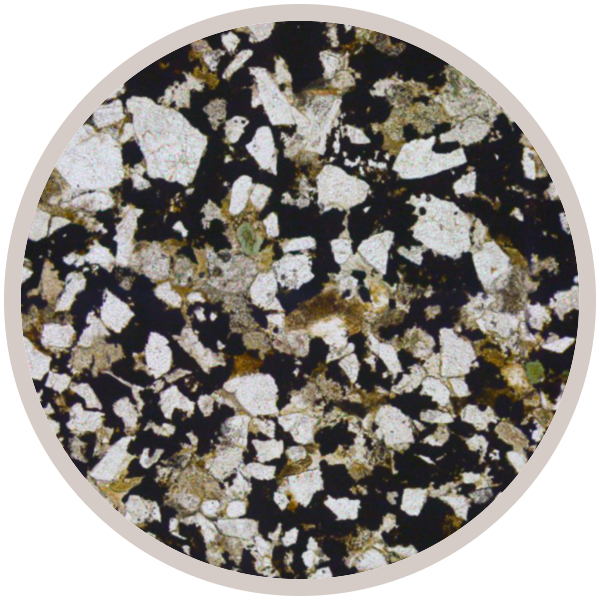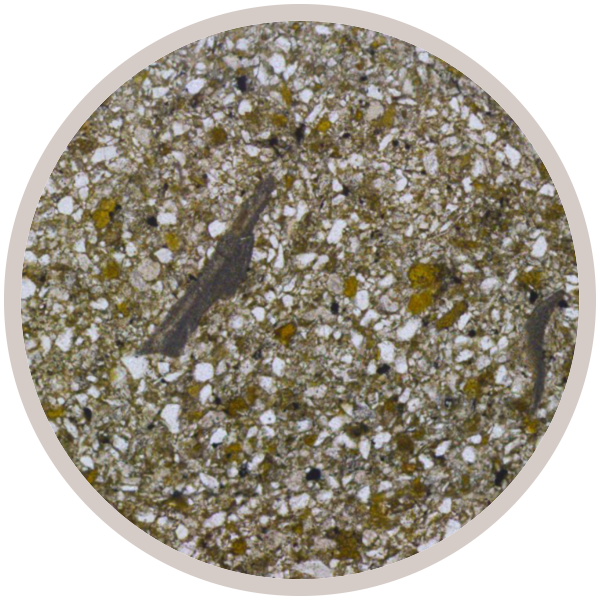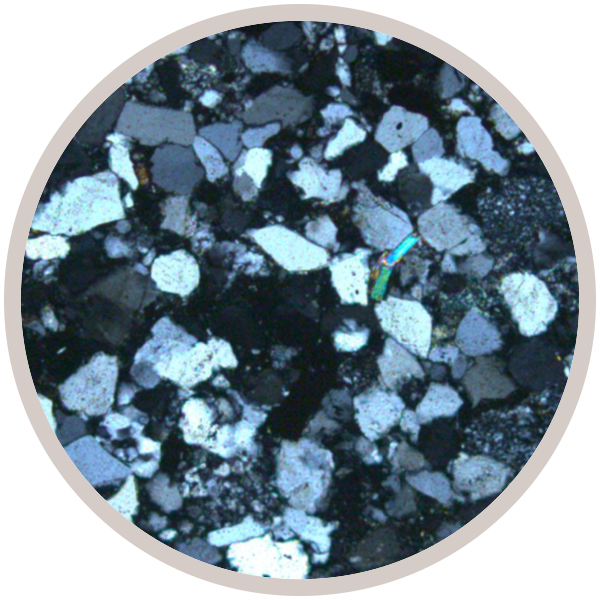
Fact sheet
A well-sorted Carboniferous sandstone collected from Doulton's Claypit.
The sandstones were deposited in a low-lying, deltaic environment when the region lay near the equator. These deltas were thickly forested with trees whose fossil remains can be found in some of the strata.
In thin section, dark minerals pick out faint lines both parallel to the long edge of the section and also slightly oblique to it. These may represent the main sedimentary bedding (parallel) and ripple laminations (oblique). This sandstone is moderately well sorted, with most grains in the range 20-200 microns. Grains are mainly clear quartz, with some dusty feldspar and opaque oxides. There are very few mica grains, and some polycrystalline grains which are likely rock fragments. Although a few well-rounded quartz grains are present, most are angular to subangular.
Pale brown or yellow interstitial material is likely fine grained clays and insoluble iron oxides, with one or two small fibrous sheaves of pale green chlorite.
This sample was collected as part of the 'Macro to Micro' project.
This Collection showcases the geodiversity of a classic geological site: the Saltwells National Nature Reserve in the West Midlands.
As well as displaying thin section and hand specimen views along with information setting them in the context of their landscapes, we also include perspectives and creative responses to the geological heritage of the sites from the local community.
| Explore the stories of the rock layers at Saltwells and Wren's Nest NNRs, designed by students at King Edward VI School, Stourbridge: |
This Collection was made possible by funding awarded to the 'Macro to Micro' project by the Natural Environment Research Council (NERC) under their 'Growing Roots' scheme.
